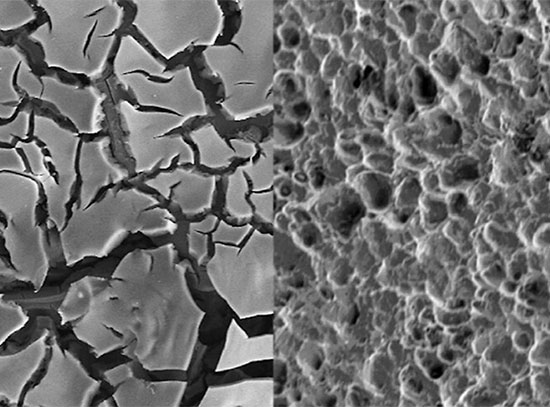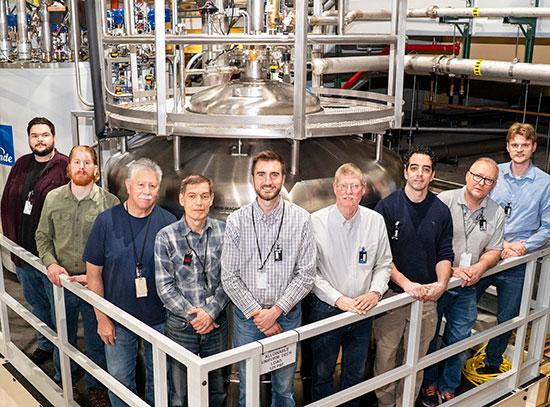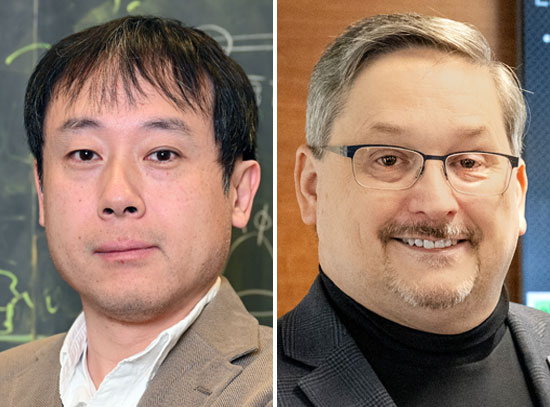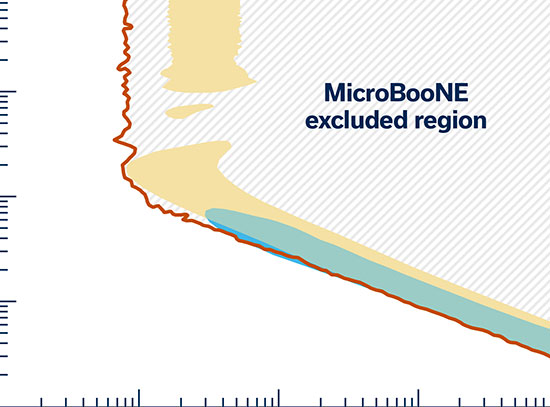Resource Review Board Provides Significant Updates on the US-Based Electron-Ion Collider
Key funding agencies, scientists, and collaborators discuss plans to build world-changing machine at Brookhaven Lab
January 8, 2025
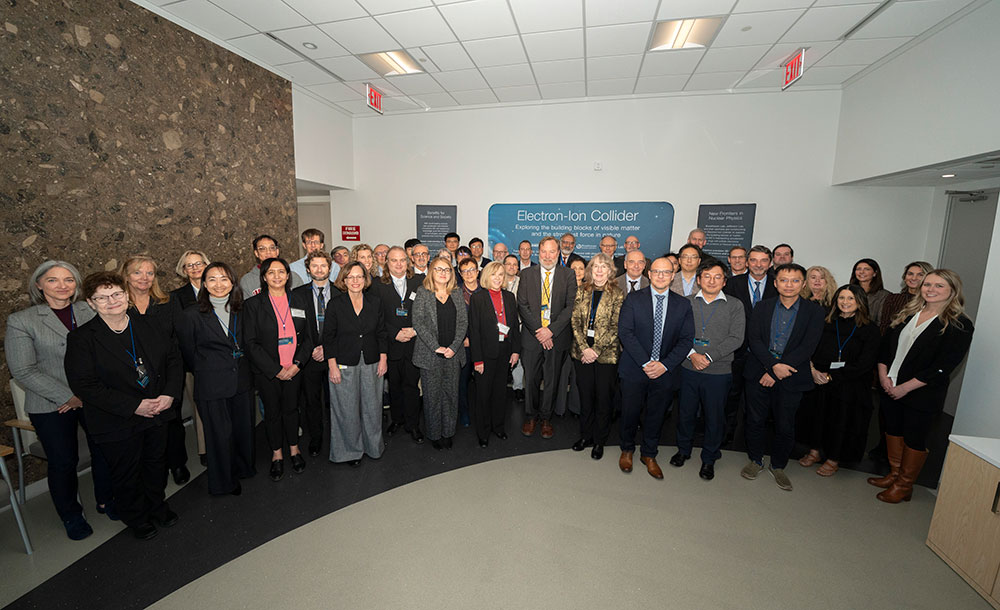 enlarge
enlarge
Members of the Electron-Ion Collider Resource Review Board Meeting in November 2024 at Brookhaven National Laboratory. (Jessica Rotkiewicz/Brookhaven National Laboratory)
Representatives from the key international funding agencies and strategic partners for the planned Electron-Ion Collider (EIC) gathered for the EIC’s Resource Review Board (RRB) meeting at the U.S. Department of Energy’s (DOE) Brookhaven National Laboratory on Nov. 12-13, 2024. The EIC is a first-of-its-kind particle accelerator to be built at Brookhaven in partnership with Thomas Jefferson National Accelerator Facility (Jefferson Lab). The meeting was an opportunity for the EIC project and collaboration leads to share significant technical progress.
This was the fourth EIC RRB meeting, with participants from agencies and institutions in the UK, France, Italy, Taiwan, Poland, South Korea, Japan, India, Czech Republic, and Canada.
“This is a really exciting project that is completely international in character,” said Linda Horton, the DOE Office of Science’s acting associate director for nuclear physics. “Everyone is coming together to deliver exciting science for the future.”
Horton reiterated DOE’s long-term commitment to the success of the project. DOE is the primary source of funding for the EIC project.
The EIC will be a 2.4-mile circumference accelerator complex that will accelerate and collide polarized, or spin-aligned, beams of electrons with protons and nuclei. What we learn from the EIC could advance our fundamental understanding about the nature of matter and drive technological advancements throughout many industries.
“This is a really exciting project that is completely international in character. Everyone is coming together to deliver exciting science for the future.”
— Linda Horton, DOE Office of Science’s acting associate director for nuclear physics
The RRB provides coordination for the development, construction, and operation of the EIC’s detector, known as ePIC. It will be a house-sized particle detector that will capture the moments when particles collide, revealing unforeseen glimpses into the internal structure of protons and nuclei.
The meeting provided an opportunity for the funding agencies supporting the EIC experimental program to review general plans for the EIC project and the ePIC detector, and to discuss specific plans within each country.
But such a technical and scientific marvel cannot be built by a singular team – it calls on expertise from around the U.S. and world.
"There is a strong community that has been growing with significant contributions to the [EIC] physics case,” said Diego Bettoni, co-chair of the EIC RRB and director of Italy’s Istituto Nazionale di Fisica Nucleare, a key funding agency for the EIC project. “We are completely community driven. This year has marked an important step forward. There has been a lot of progress since the last RRB meeting.”
Brookhaven Lab physicist Abhay Deshpande, who is also the EIC RRB co-chair and interim associate laboratory director for nuclear and particle physics at Brookhaven Lab, added, “We are listening to each other, and we have developed a common language.”
Worldwide interest in the EIC has inspired international partners to make significant contributions.
“The UK’s commitment in EIC is a strong indication of how closely we’re working with the U.S. on this,” said Helen Beadman of the UK Science and Technology Facilities Council.
Brookhaven Lab physicist Elke Aschenauer, co-associate director for the EIC’s experimental program, emphasized forward momentum for the critical components of ePIC, the EIC’s detector and its sub-systems, with technical contributions being developed by its national and international collaborators.
"We are making incredible progress every year, moving towards construction,” said Aschenauer.
In addition to host laboratories Brookhaven Lab and Jefferson Lab — as well as six other DOE national laboratories and over 100 universities and institutions in the U.S. — in total, more than 1,500 scientists from 40 countries are engaged in developing the science program and experiments for this unique machine.
“The EIC is fundamentally about people who are passionate about answering a deeply human question: What are we made of?” said John Lajoie, spokesperson for the ePIC collaboration and group leader for the Relativistic Nuclear Physics Group within the Physics Division at DOE’s Oak Ridge National Laboratory. “International participation is key, absolutely essential to the success of the EIC.”
The Czech Technical University in Prague will host the next EIC RRB June 5-6, 2025. This will be the second RRB meeting to be held in Europe.
“We are very happy that groups from the Czech Republic will host the next RRB,” said Deshpande. “Their enthusiasm exemplifies the international support for the EIC as a U.S.-led, globally backed facility.”
Brookhaven National Laboratory is supported by the Office of Science of the U.S. Department of Energy. The Office of Science is the single largest supporter of basic research in the physical sciences in the United States and is working to address some of the most pressing challenges of our time. For more information, visit science.energy.gov.
Follow @BrookhavenLab on social media. Find us on Instagram, LinkedIn, X, and Facebook.
2025-22254 | INT/EXT | Newsroom




